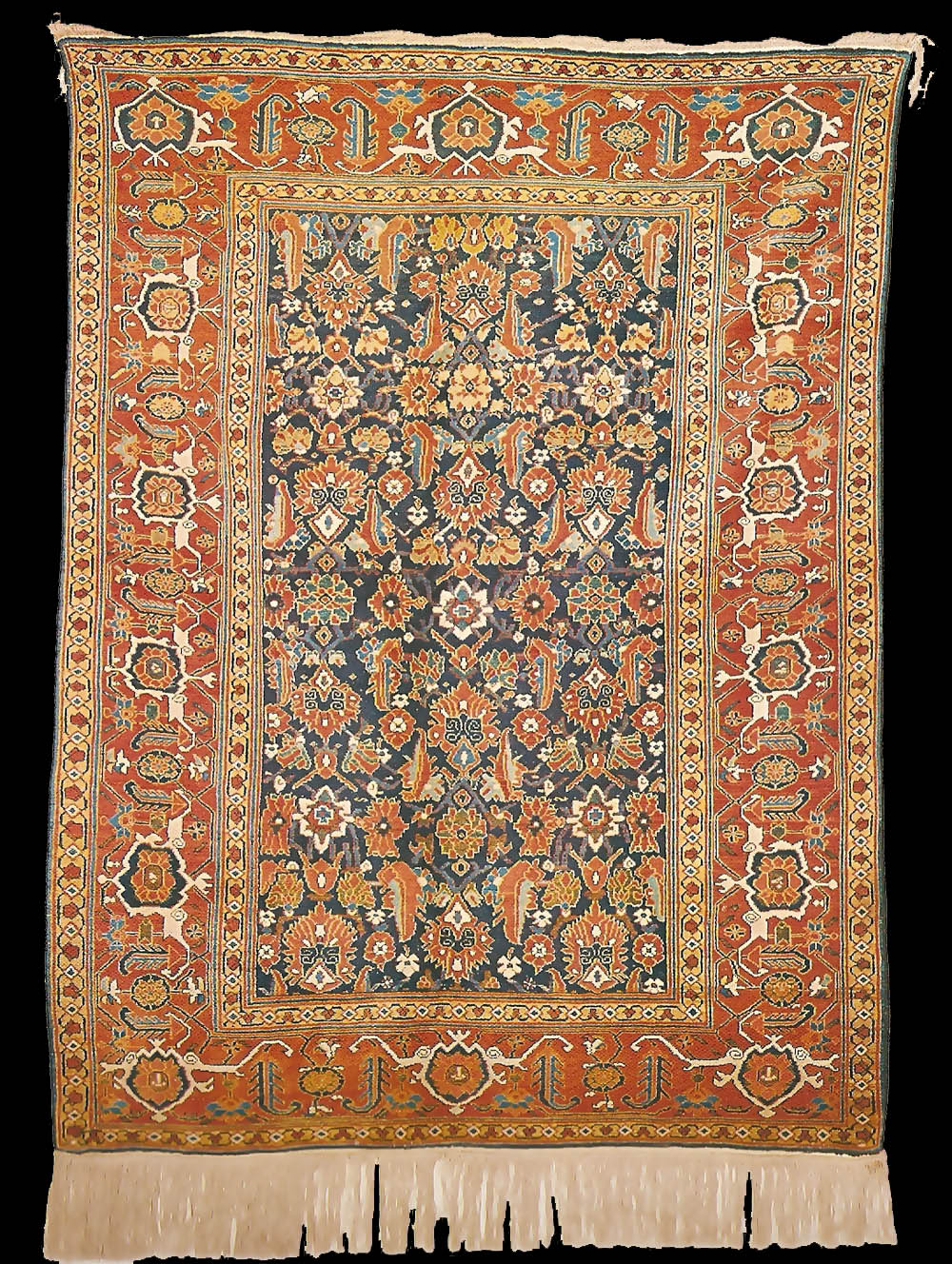|
Note: This Herat Pirabadil
(Perepedil) rug was published at Luciano Coen & Louise Duncan's The Oriental
Rug. Attributed to Shirvan, but actually this type of Herati design antique
rugs were woven mainly in Pirabadil village, Kuba Region. This is also an
antique Kuba Pirabadil rug.
PLATE 76. "SHIRVAN"
ca. 1930,
6'6" X 4'10" [m. 2.00 x 1.50]
Warp: wool
Weft: cotton, two shoots after each row of knots
Knotting: Ghiordes (Turkish), wool, 132 knots per square inch [2100
per dm.2]
Although
this rug bears no resemblance to those in Plates 69-75, which come from the
same district, it makes quite an interesting comparison to the one in Plate
89, from Agra, India, and to certain Persian rugs. It has fairly muted
colors for a Caucasian and is almost totally devoid of the angularity by
which most people would recognize a Caucasian rug. In fact, it is filled
with Persian botehs and covered with an all-over flower design joined by
vines and leaves, which is also characteristically Persian. Like the one in
Plate 89, the wide border contains the Herati motif, the other most often
used Persian design. If the field were not so crowded, it might even be
possible to trace an arabesque as the main design.
Part of
the charm of this rug lies in the fact that it is like a Rorschach test,
that is, identical on the sides but not on the top and bottom (see Plate
89). From top to bottom it appears to be identical in sections, but not
wholly.
The
matching guard borders are pretty and delicate, and the central one is
fairly prominent. The leaves in the Herati are rayed. The white outlines of
the flower are so long and indolent that they make the flower look like an
insect with great feelers.
It is
interesting to note that the colors are shades of blue and orange-brown with
white and yellow touches, not a combination one would think beautiful in the
abstract. This rug has faded the way an Oriental rag should fade, though,
and its color is one of its strongest points.
|

